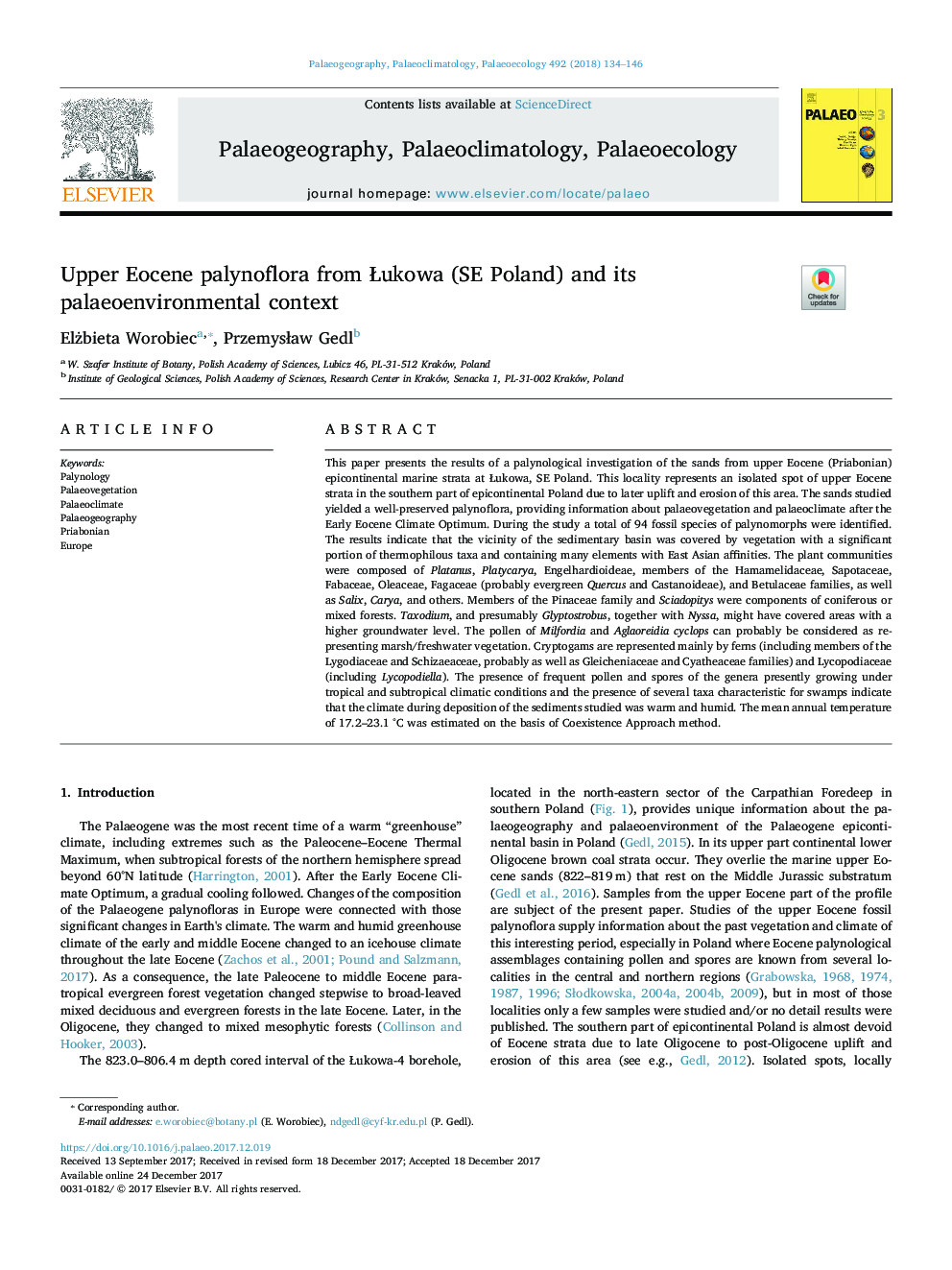| کد مقاله | کد نشریه | سال انتشار | مقاله انگلیسی | نسخه تمام متن |
|---|---|---|---|---|
| 8868401 | 1622100 | 2018 | 13 صفحه PDF | دانلود رایگان |
عنوان انگلیسی مقاله ISI
Upper Eocene palynoflora from Åukowa (SE Poland) and its palaeoenvironmental context
دانلود مقاله + سفارش ترجمه
دانلود مقاله ISI انگلیسی
رایگان برای ایرانیان
کلمات کلیدی
موضوعات مرتبط
مهندسی و علوم پایه
علوم زمین و سیارات
فرآیندهای سطح زمین
پیش نمایش صفحه اول مقاله

چکیده انگلیسی
This paper presents the results of a palynological investigation of the sands from upper Eocene (Priabonian) epicontinental marine strata at Åukowa, SE Poland. This locality represents an isolated spot of upper Eocene strata in the southern part of epicontinental Poland due to later uplift and erosion of this area. The sands studied yielded a well-preserved palynoflora, providing information about palaeovegetation and palaeoclimate after the Early Eocene Climate Optimum. During the study a total of 94 fossil species of palynomorphs were identified. The results indicate that the vicinity of the sedimentary basin was covered by vegetation with a significant portion of thermophilous taxa and containing many elements with East Asian affinities. The plant communities were composed of Platanus, Platycarya, Engelhardioideae, members of the Hamamelidaceae, Sapotaceae, Fabaceae, Oleaceae, Fagaceae (probably evergreen Quercus and Castanoideae), and Betulaceae families, as well as Salix, Carya, and others. Members of the Pinaceae family and Sciadopitys were components of coniferous or mixed forests. Taxodium, and presumably Glyptostrobus, together with Nyssa, might have covered areas with a higher groundwater level. The pollen of Milfordia and Aglaoreidia cyclops can probably be considered as representing marsh/freshwater vegetation. Cryptogams are represented mainly by ferns (including members of the Lygodiaceae and Schizaeaceae, probably as well as Gleicheniaceae and Cyatheaceae families) and Lycopodiaceae (including Lycopodiella). The presence of frequent pollen and spores of the genera presently growing under tropical and subtropical climatic conditions and the presence of several taxa characteristic for swamps indicate that the climate during deposition of the sediments studied was warm and humid. The mean annual temperature of 17.2-23.1 °C was estimated on the basis of Coexistence Approach method.
ناشر
Database: Elsevier - ScienceDirect (ساینس دایرکت)
Journal: Palaeogeography, Palaeoclimatology, Palaeoecology - Volume 492, 1 March 2018, Pages 134-146
Journal: Palaeogeography, Palaeoclimatology, Palaeoecology - Volume 492, 1 March 2018, Pages 134-146
نویسندگان
Elżbieta Worobiec, PrzemysÅaw Gedl,